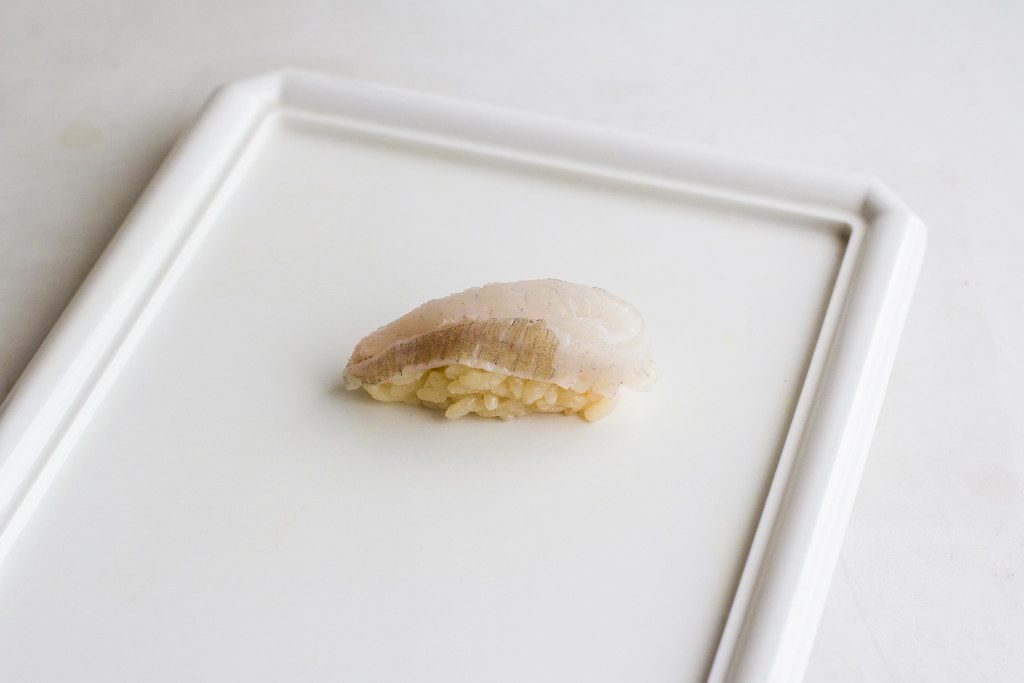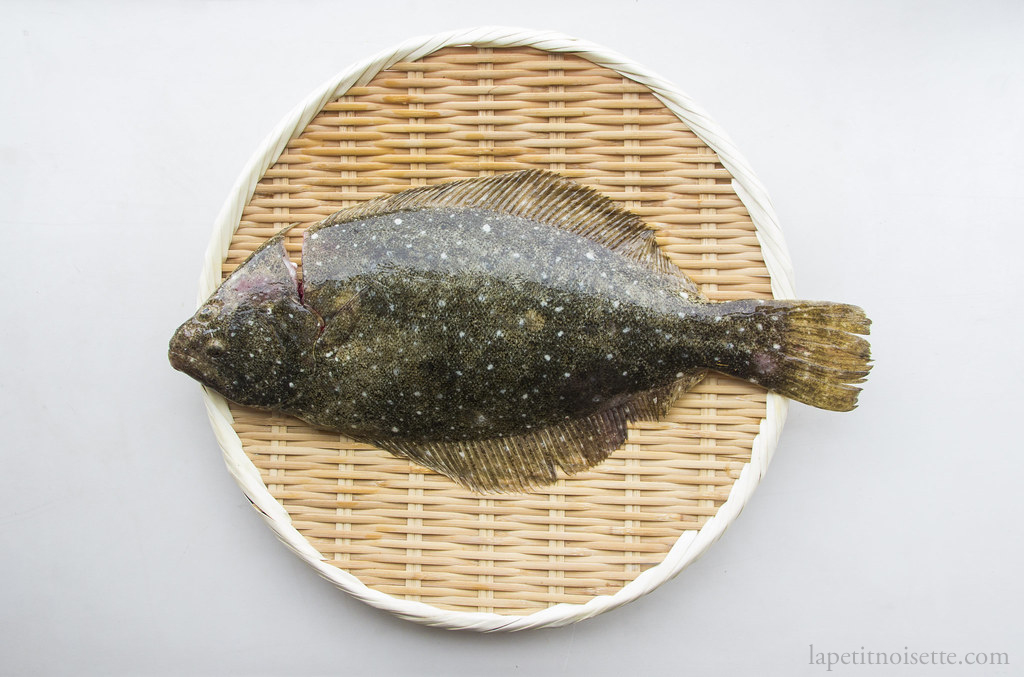
The world of flatfishes is complicated as it consists of 11 families and over 500 species so let’s try and wrap our head around it. Traditional Japanese knowledge passed down by word of mouth is: “Hidari hirame, migi karei” (左平目、右かれい), which directly translates to “left flounder and right halibut”. This convention holds true for two of the most commonly found flatfishes in Japan, Hirame (平目), which has both eyes on the left side, and Mako Garei/Karei ( 真子鰈), which has both eyes on the right side. Out of the 11 families of flatfish, the 3 that are important to us are:
- Pleuronectidae– Right-eyed Flounders
- Bothidae– Left-eyed Flounder
- Paralichthyidae– Large-tooth Flounders
Mako Garei, which has both eyes on the right side resides in the Pleuronectidae family. This family contains certain species of Halibut and soles, but the Mako Garei still classified as a right-eyed flounder. Hirame on the otherhand, which has both eyes on the left side, resides in the Paralichthyidae, that is with the large-tooth flounders and not Bothidae, the left-eyed flounder. This is because the family Bothidae, although known as left-eyed flounders in english, does not contain all founders with both eyes on the left side.
On a side note, the most prized of all flatfishes in Japanese cuisine, the Hoshi Garei (星鰈/Starry Flounder/Spotted Flounder/Pleuronectes yokohamae) is in the same family as Mako Garei, which resides in the Pleuronectidae family. All flatfishes are classified as Shiromi (白身), or white fleshed fish.
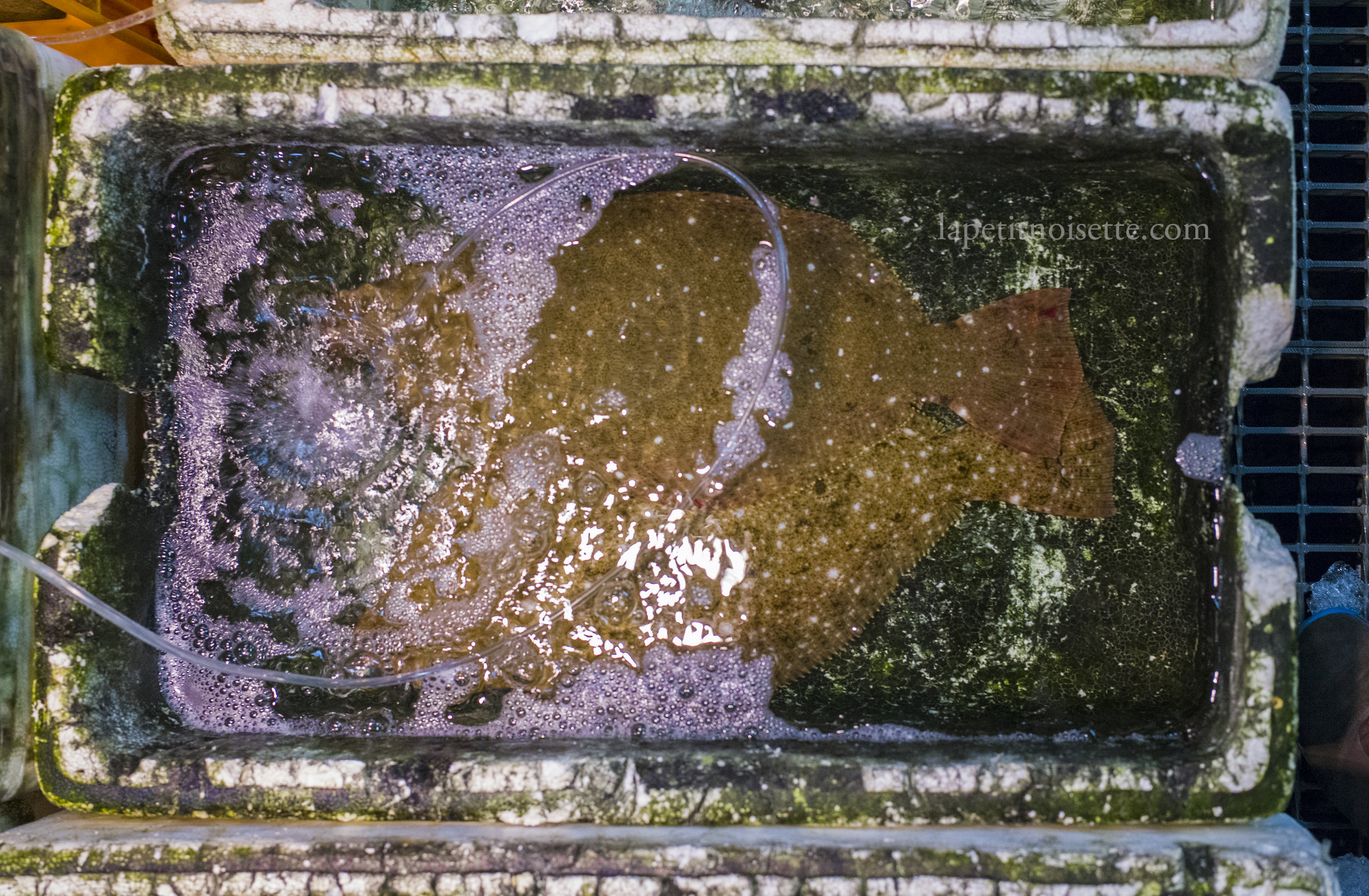
Oliver Flounder or Paralichthys olivaceus is a traditional Edomae flat fish served at sushi restaurants. Its other names include Bastard Halibut, and Shitabirame (舌平目). Hirame is in season in Japan during the entire duration of winter. At the start of winter, when the Hirame is still small and young, it is instead known as Soge (そげ).
Most sushi restaurants serve Hirame from late autumn to the end of winter and Mako Garei from the start of spring to the end of summer. As winter gets colder and colder, Hirame starts to accumulate more and more fat, improving its taste. At the restaurants, we typically try and use Hirame that is around 2kg in size, which is old enough to have a unique chewy texture and light taste. The taste of Hirame is subtle and is more appreciated for its texture. In order to improve the taste and texture of Hirame, larger ones are sometimes aged for 2 to 3 days (read more on fish ageing). This allows the enzymes to work on the fish, increasing it’s glutamate acid content and making its texture softer.
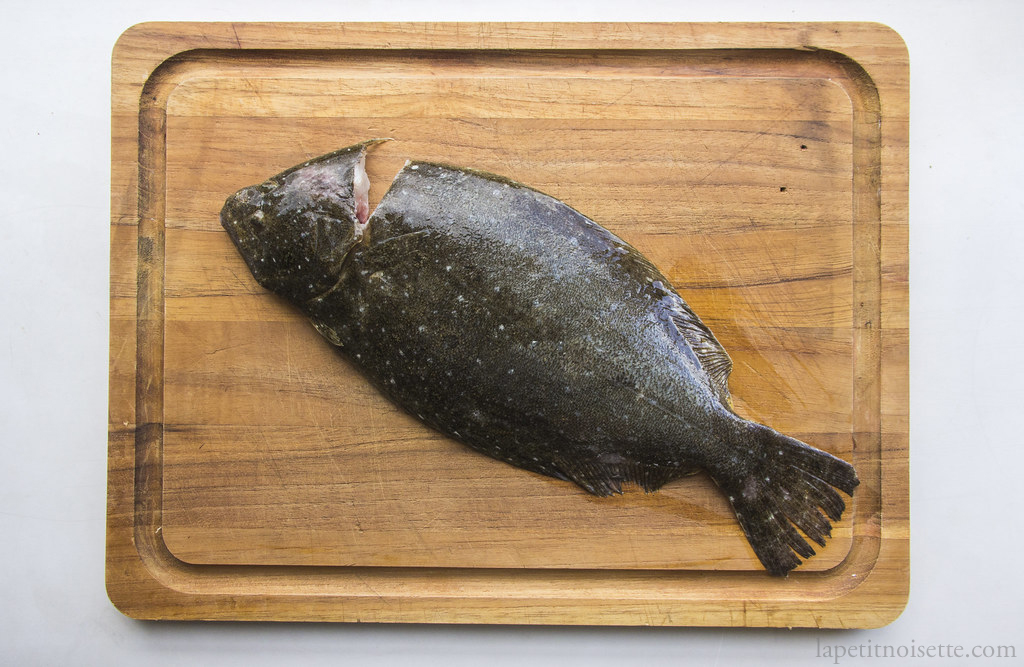
The scales of Hirame and Mako Garei are also very tough and therefore usually cut away with a Yanagiba knife instead of using a fish scaler. This is done even if the skin of the flatfish is eventually removed before being served as sushi.
In the example shown below, the Hirame is a wild-caught Hirame around 700g in size. It is therefore not aged before being prepared as sushi. It may however, benefit from a day’s worth of ageing. Furthermore, the scales on a younger Hirame are soft enough to be removed with a fish scaler, which is what I have done in the example below.
Edomae-style preparation of Hirame:
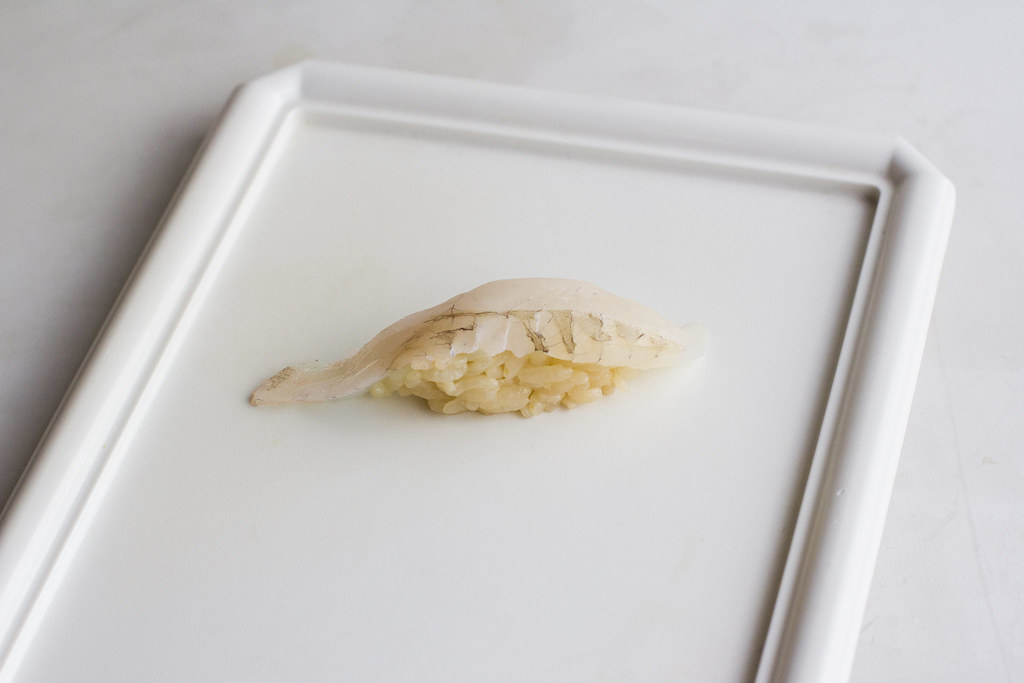
After washing the fish in cold water, start by descaling the fish. We descale the fish using a urokotori (鱗取り), a traditional Japanese fish scaler. Run the scaler against the direction of scale growth to most efficiently remove them. Wash away the scales and slime with cold water. Whilst descaling, we run a small stream of cold water onto the fish from the tap to prevent any scales from flying about. Scale both sides of the Hirame.
Make a cut just behind the pectoral fin in order to cut off the head. In this picture, a cut was already made by the fishmonger in order to kill the fish using the Ikejime technique.
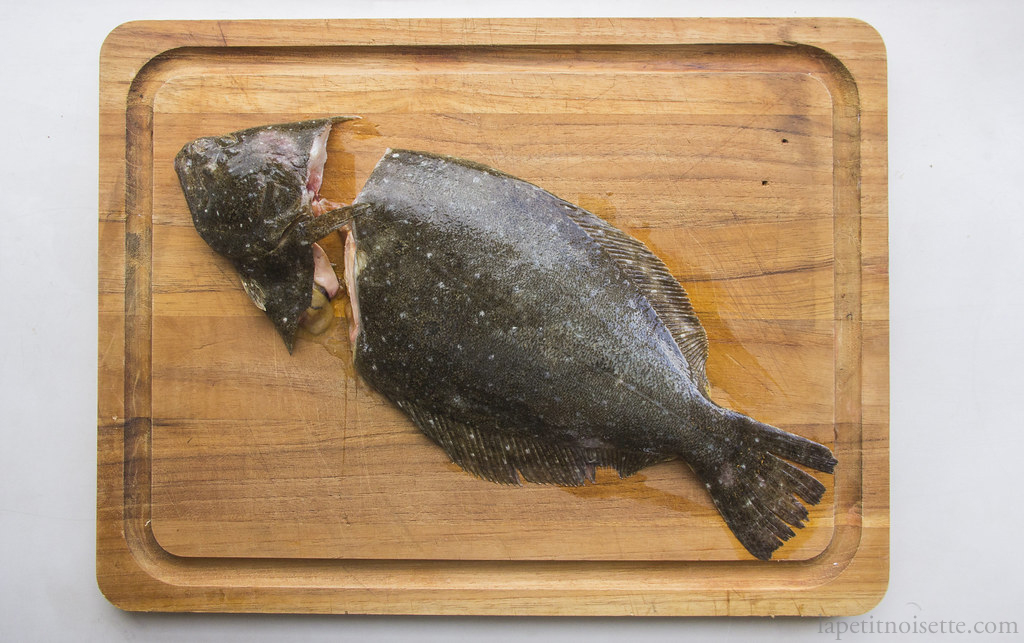
Make a cut down the belly of the fish and remove any innards, saving the liver of the fish.
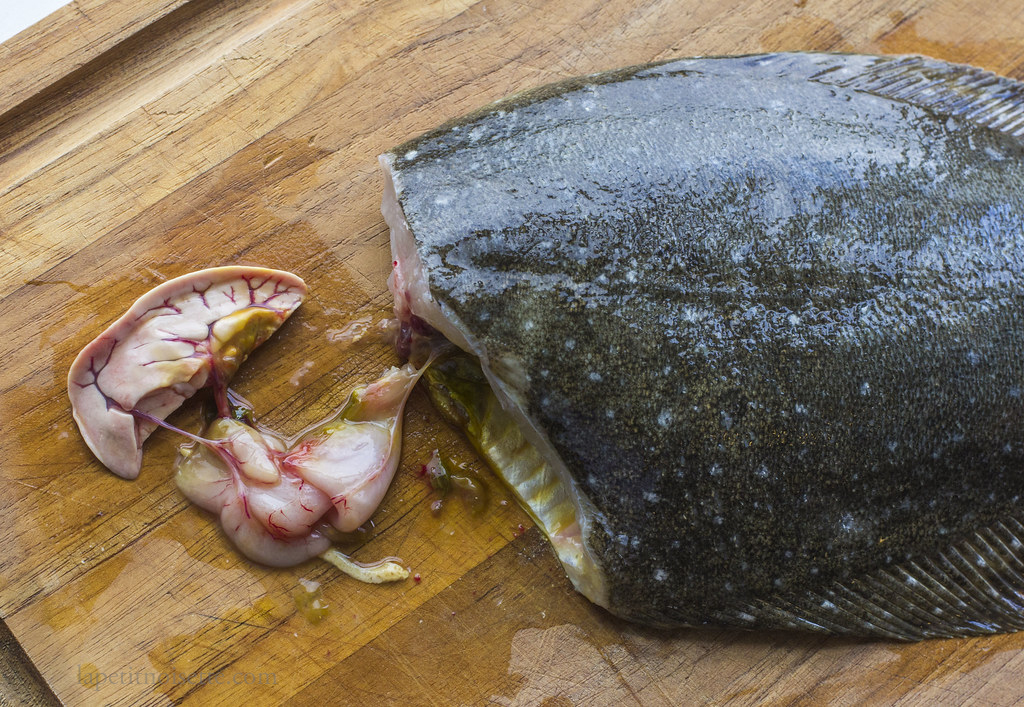
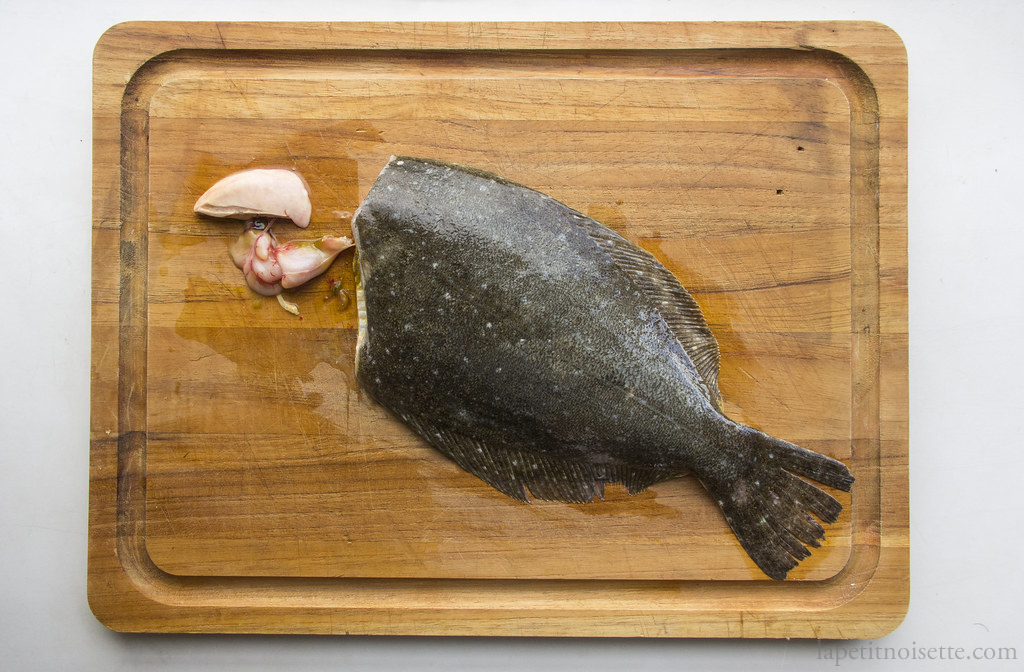
Cut a straight line from the top of the remove head all the way down following the backbone to the tail.
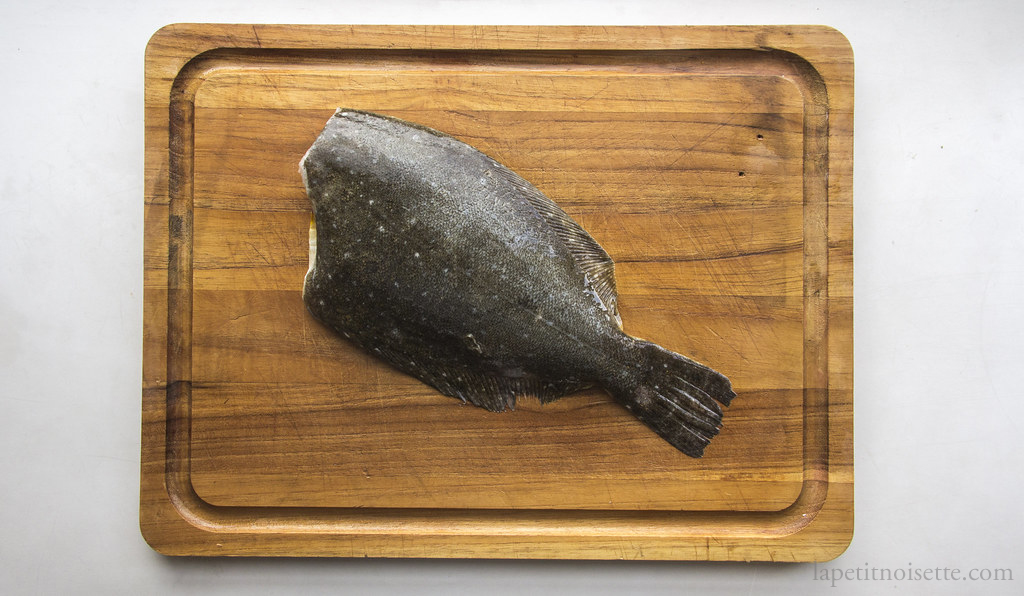
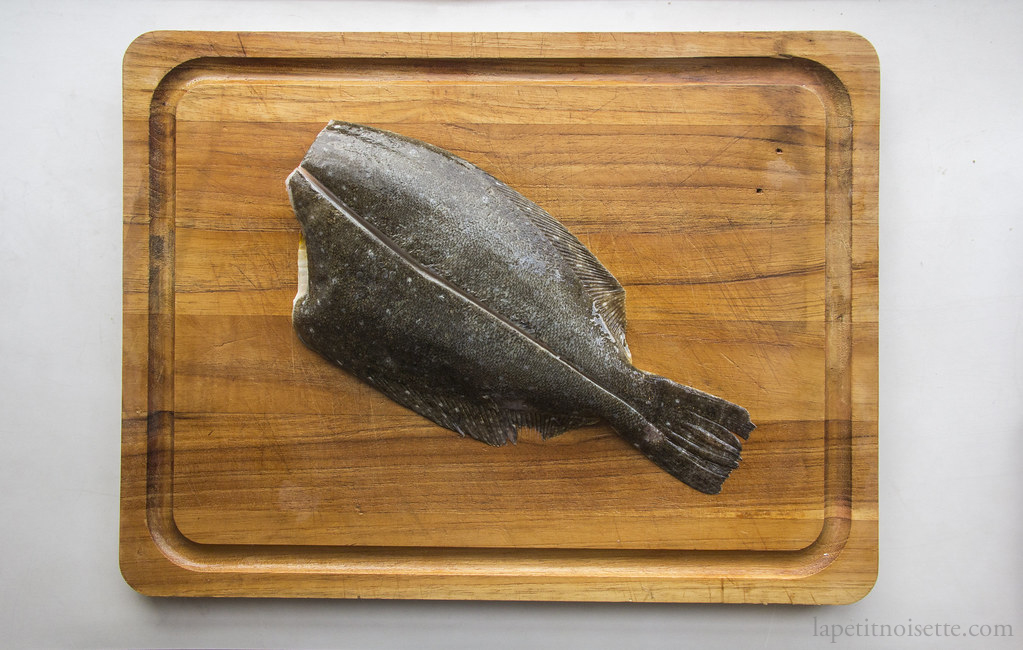
Insert the tip of the blade underneath the flesh from the previous cut, angling the blade downwards. Using long cutting motions, slight the blade between the bones extending from the backbone and the flesh, slowly teasing out a fillet. You should be able to feel your blade sliding along the bones, reducing wastage.
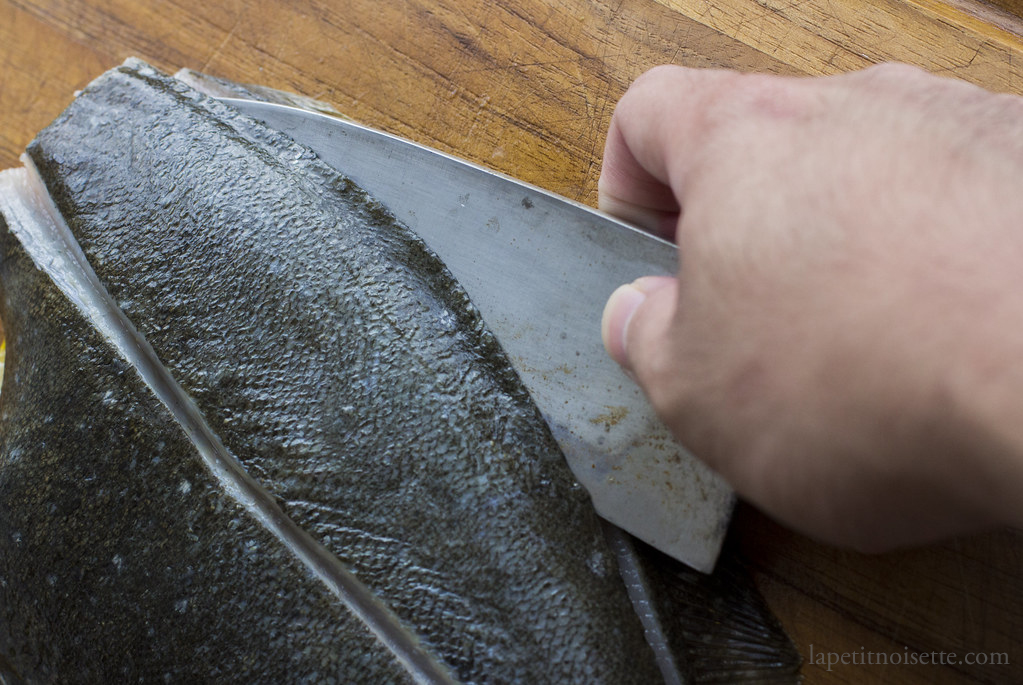
Above the fins of fish, cut into the skin of the fish to help release the fillet. Make another incision at the tail to completely free the fillet from the bones.
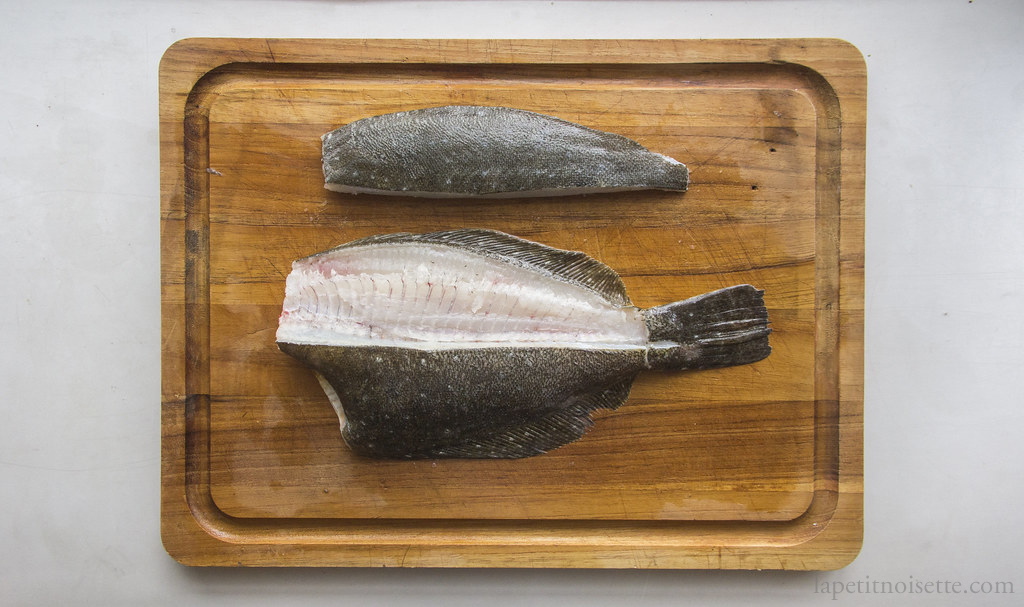
Repeat the process to remove the second fillet on the same side.
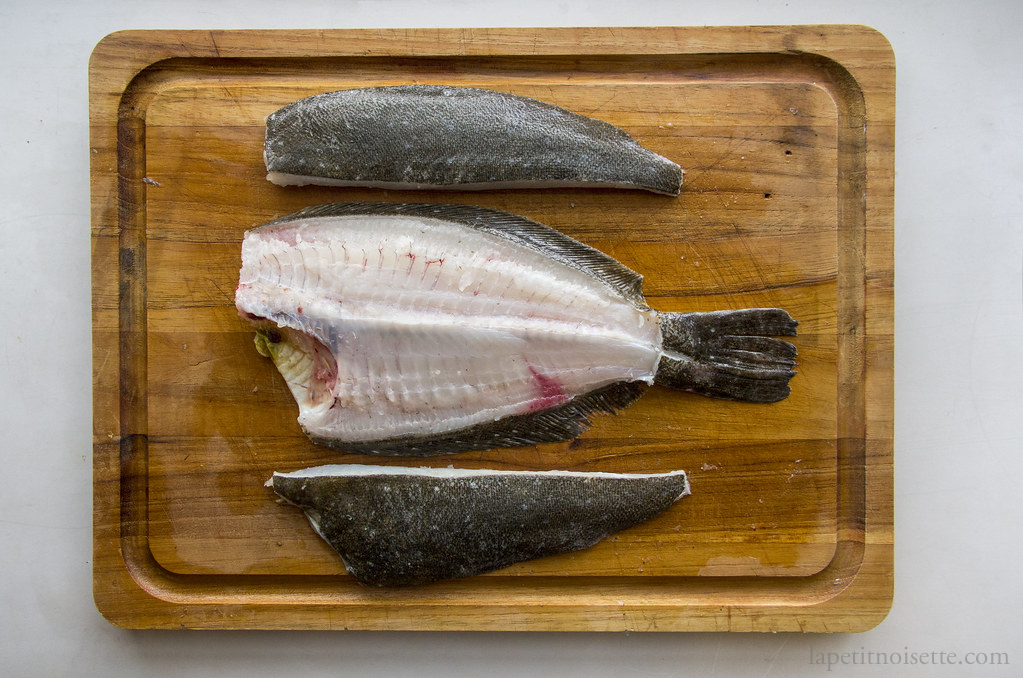
Turn the fish over and repeat the same process to obtain a total of 4 fillets.
Generously salt a colander and place the fillets on a colander. Salt the flesh of the fish as well.
Allow to rest for 20 to 25 minutes depending on the size. During that time, remove the pin bones of the fish. After salting, wash off the salt and place the fillets skin side down on a chopping board.
Remove the skin off the fillets by making a small cut underneath the tail of the fillet between the flesh and skin. Start by cutting into the flesh and stopping just at the skin. When the blade just touches the skin, use a back and forth motion on the skin to gently separate the fresh from the skin whilst angling the blade until it is flat. The blade should remain still whilst you only move the skin.
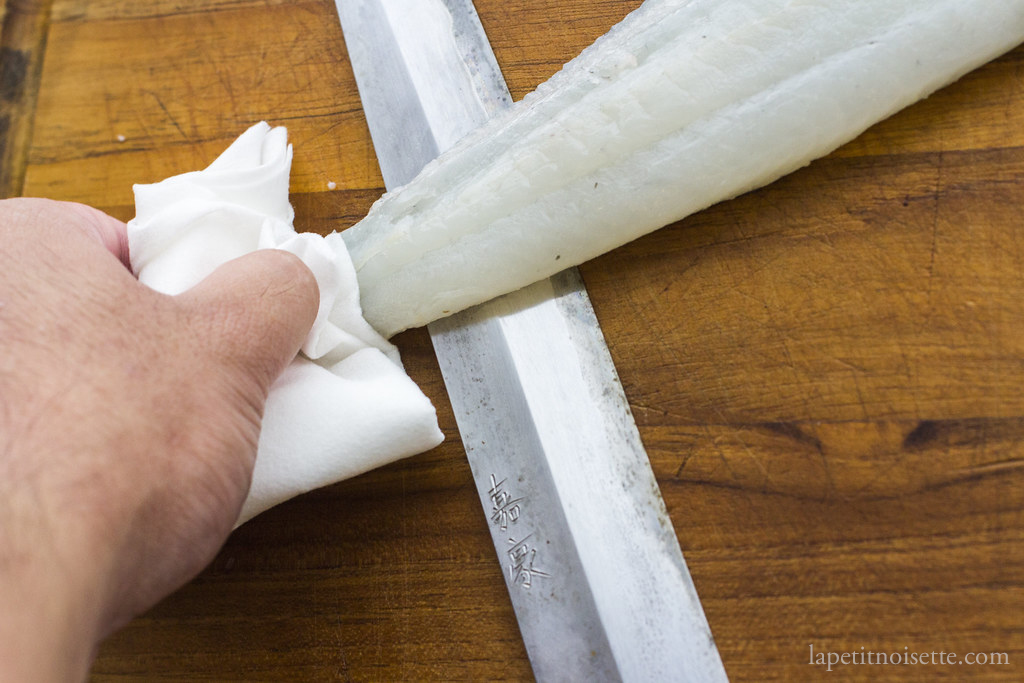
Continue the cutting motion until all the skin has been removed from the flesh. If the skin breaks halfway, don’t worry and start from the other end of the fillet. Using a paper towel to grip the skin of the fish allows you to have a more stable hold on the fillet, making it easier to cut.

On each fillet of fish, you will notice a change in texture and shape of the muscle at the edge of the fillet. This is known as the little flesh on the fin or Engawa in Japanese (えんがわ/縁側). As the most exercised part of the fish, this part is more chewy and stronger in flavour, making it a prized piece of sushi. It is extremely rare, with only around 15 pieces being able to be made from a 2kg Hirame. This is true only if the Hirame is skilfully filleted. If not, a lot of the Engawa is usually left on the bone and wasted.
